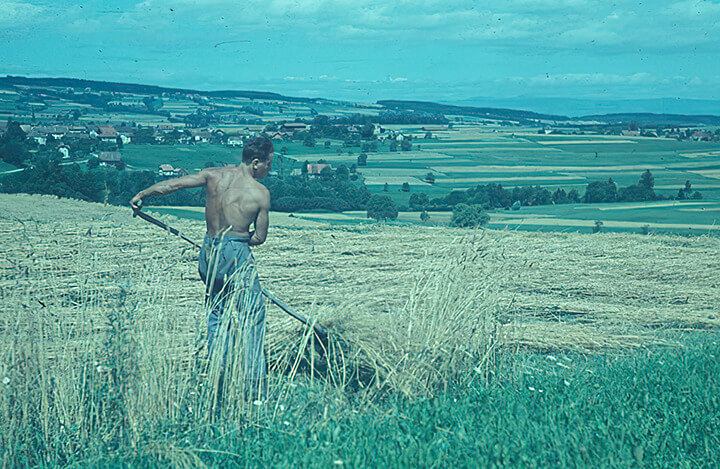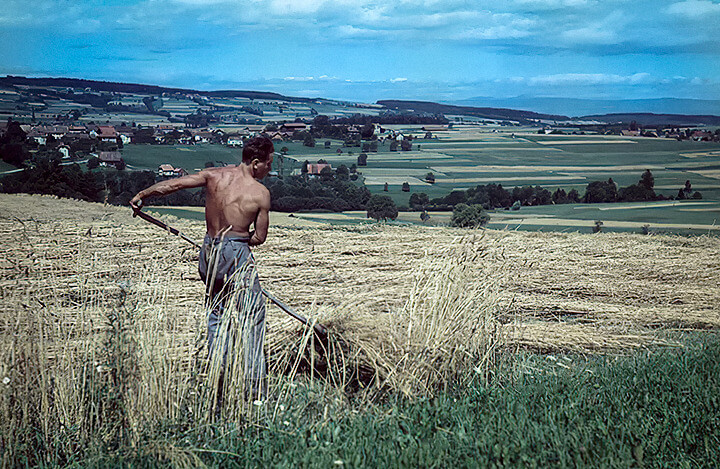The Farmer Bodies Series
Without a doubt this series comprises the core of Gustave Roud’s photographic work, or at least a center from which to recognize his dual production.
Posing generally bare-chested, the young farmer in the field engages an imagery of virile power. Far from photo-reporting of the countryside, this series demonstrates a shooting protocol that was repeated with different models. The farmer celebrated in the photography pulls away from the literary figure of Aimé, in the sense that he more closely resembles a Greek statue or an athlete rather than a guardian angel.
A representative figure among Roud’s photographed farmers, Fernand Cherpillod allowed the photographer to set up an aesthetic of the farmer that touched an agricultural athleticism or of a “first man” of the earth. Gathering momentum at the end of the 1930s, this aesthetic used then over the next decades maintained strong connections with the practices of the period: the low-angle shot, sky background, the choice of the model himself (young, muscular, beardless or hairless)—all echoes of the images in vogue at the time in the press or the news (think of the first part of Olympia by Leni Riefensthal).
The celebration of the farmer is accompanied by an aesthetic of desire that becomes erotic through certain set-ups using shadows or objects. But these more rare set-ups most often give way to a fascination with the athletic body as an end to itself, engaged in a silent epic of the lonely thresher.
Gustave Roud - ECAL/UNIL
Fernand Cherpillod - Autochrome by Roud
Before and After Color Restoration































